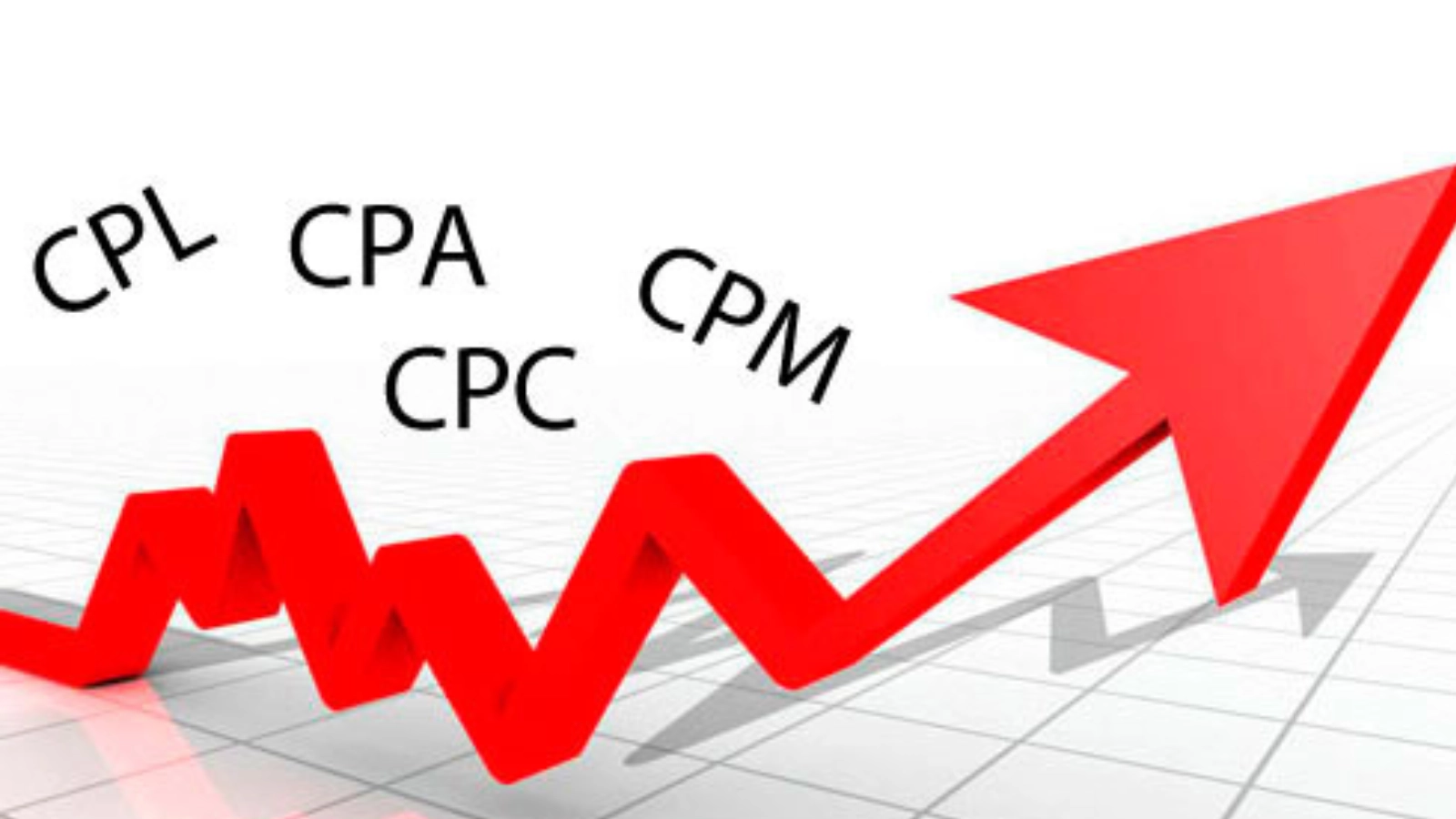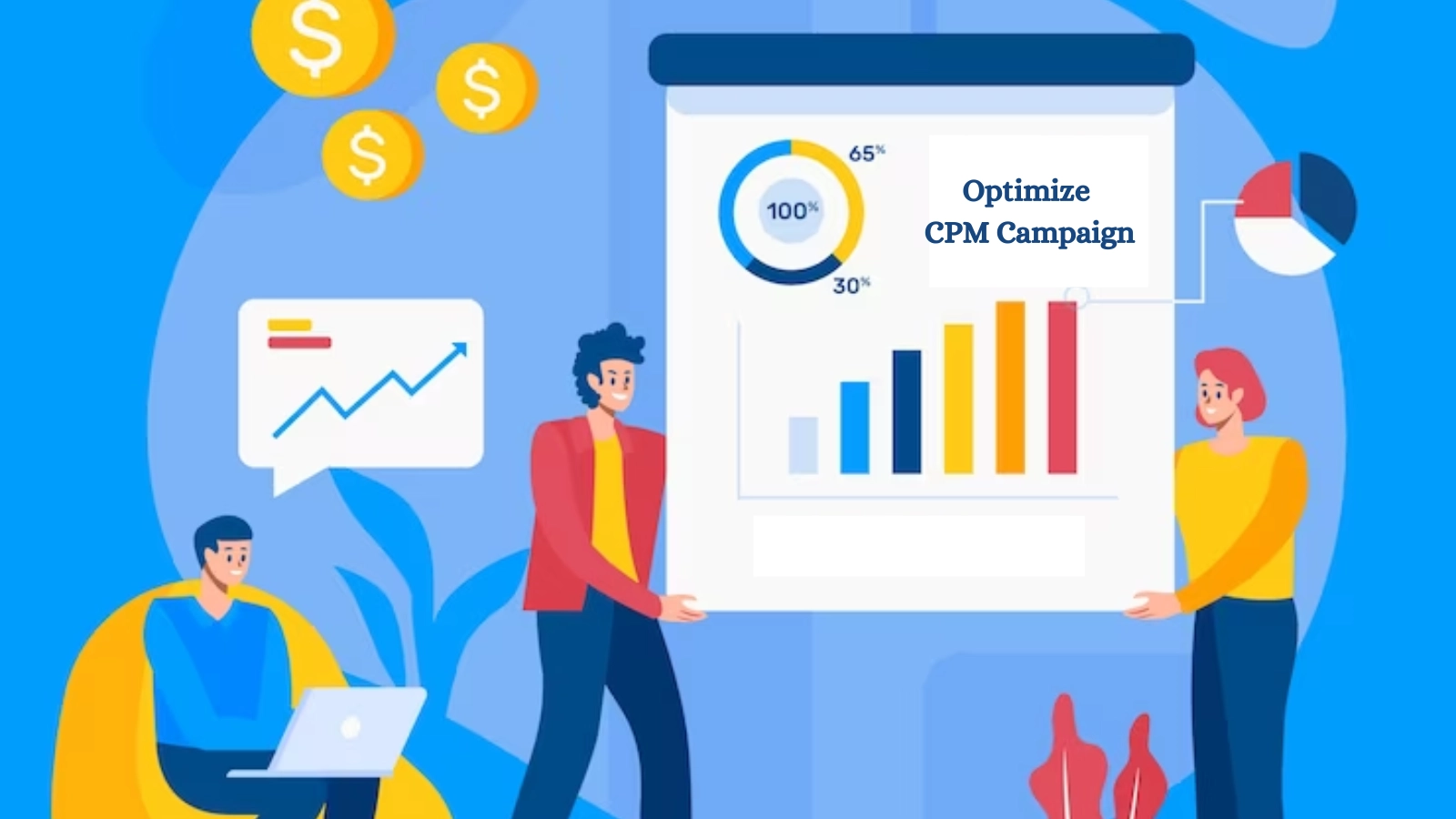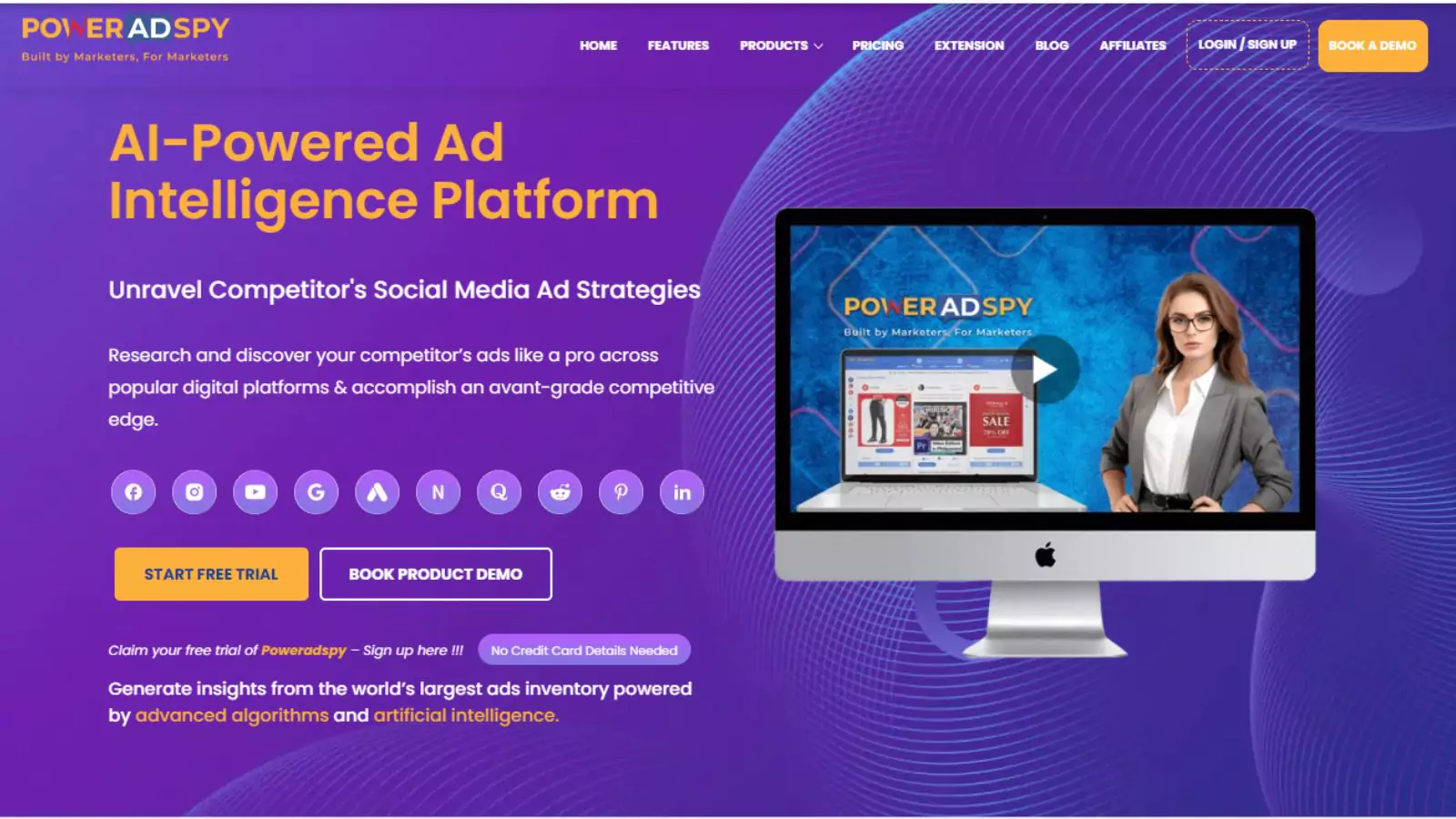Decode CPM Bid Metrics: How To Optimize The Campaign
Have you ever wondered how online ads manage to pop up exactly where you’re browsing? It’s like they’re reading your mind, right? Well, the truth is, there’s a method to this digital madness, and it’s called CPM bid. But what exactly is CPM bidding, and how does it work?
Imagine you’re a teenager running a lemonade stand. You decide to pay the mall owner a fee for every hour your stand is open, regardless of how many glasses of lemonade you sell. That’s similar to how CPM bidding operates in the digital world. It’s a way advertisers pay for ad space. They agree to pay a certain amount for every thousand times their ad is shown, regardless of whether someone clicks on it or not.
So, the next time you see those Instagram or YouTube video ads popping up while you are scrolling through Instagram or watching YouTube, remember that there’s a whole bidding process behind them, and it’s all about reaching the right audience at the right time. In this blog, we have covered everything you need to decode cpm bidding. So, let’s get started.
In a hurry? Listen to the blog instead!
What Is A CPM Bid?
CPM, or Cost Per Mille, is a metric used in digital advertising to measure the price of 1,000 impressions. It is an impression that refers to each time a user views an ad. CPM bidding is a pricing model where advertisers pay for every 1,000 impressions of their ad, regardless of whether the viewer interacts with it.
The Cost-per-mile bid shows how much advertisers are willing to pay for a thousand views of their ad. This model is particularly prevalent in display advertising, where the goal is often to increase brand visibility and exposure.
Advertisers using bidding focus on reaching a large audience and creating awareness, making it a suitable strategy for campaigns with branding objectives. In digital advertising, the CPM bid is just one of several bidding models, and the choice of bidding strategy depends on the campaign goals and key performance indicators (KPIs).
What Is The Difference Between CPM vs. CPC|CPL|CPA?
CPM, CPC, CPL, and CPA are terms utilized by digital marketers. Often, beginners get stuck between the terms, so here is a brief of each term.
CPM (Cost Per Mille) is one of several pricing models used in digital advertising, and it differs from other models like CPC (Cost Per Click), CPL (Cost Per Lead), and CPA (Cost Per Acquisition) in how advertisers charge for their ad campaigns. Here’s a brief comparison:
CPM (Cost Per Mille):
Charging Metric: The charging metric of the CPM bid depends on the number of impressions (views) of an ad.
Goal: It generally gets used for brand awareness and exposure, where the primary objective is to reach a large audience.
CPC Bid:
Charging Metric: Advertisers pay for each click on their ad.
Goal: Suitable for campaigns where the primary objective is to drive traffic to a website or encourage a specific user action (clicking on the ad).
CPL (Cost Per Lead):
Charging Metric: Advertisers pay for each lead generated, often measured by users filling out a form or providing contact information.
Goal: Its usage is in lead generation campaigns where the focus is on acquiring potential customers who have shown interest in a product or service.
CPA (Cost Per Acquisition):
Charging Metric: Advertisers pay for a specific action or conversion, which includes a sale, sign-up, or other desired outcome.
Goal: Suitable for campaigns focused on measurable and specific outcomes, where the advertiser wants to track and optimize for a particular user action.
Choosing the precise model depends on the campaign goals and the desired user actions. Some advertisers may even combine these models in a comprehensive strategy to achieve various objectives within a single campaign.
Why Is CPM Bidding Important?
Cost per mile bid is vital in digital advertising for several reasons:
Brand Exposure and Awareness: Cost-per-mile bidding is particularly effective for campaigns focused on brand exposure. Advertisers pay for impressions, making it a suitable model for increasing brand visibility and awareness among a broad audience.
Predictable Costs: CPM provides advertisers with a predictable cost structure. Estimating and controlling advertising expenses becomes easier since advertisers pay a set amount for every 1,000 impressions.
Vast Reach: Cost-per-mile bidding allows advertisers to reach a large audience. It is beneficial for campaigns where the primary goal is to maximize the number of times an ad is seen, such as in the early stages of a product launch or when introducing a new brand.
Effective for Display Advertising: CPM Bid is commonly used in display advertising, focusing on visual impressions. Display ads aim to capture attention and create brand recognition through visuals, making CPM a suitable model for this cost effective ad type of advertising.
Campaign Optimization: By analyzing CPM metrics, advertisers can gain insights into the performance of their campaigns. The data gets utilized to optimize targeting, creative elements, and overall strategy to improve the effectiveness of future campaigns.
How To Optimize Your CPM Campaign?
No one desires to incur more expenses than necessary. At this juncture, you might be pondering how to reduce your cost per thousand impressions (CPM) and attain the average CPM on platforms like Facebook, Instagram, Twitter, and various ad networks.
Fortunately, there are several strategies to optimize your paid advertising efforts and decrease costs. Here are three suggestions to consider.
Tailor your ads to search intent.
Although CPM keywords may not need the same specificity as those in PPC campaigns, relevance remains crucial. Align your ads with the keywords you bid on and vice versa, ensuring they harmonize. Incorporating search intent in your CPM bid campaigns contributes to decreased CPM as Google recognizes the relevance of your ads.
Employ negative keywords
Ensuring relevance remains crucial even when targeting a vast audience in CPM campaigns. Alongside optimizing for search intent, using negative keywords in Google Ads is an effective strategy. Negative keywords instruct Google not to display your ads for specific terms. It prevents your ads from appearing in searches that include irrelevant terms, thereby avoiding wasteful impressions on an unsuitable audience.
Concentrate on concise keywords.
While the current trend is to target CPM specific, long-tail keywords, there may be instances when you focus on shorter, more general keywords.
Boosting brand awareness through CPM bids is advantageous. Aligning shorter keywords with your strategy is beneficial. It is especially true when immediate clicks or conversions are not the primary focus. Take the help of ad spy tools like PowerAdSpy to grab keywords and competitive ads analysis of all the ads across the world.
PowerAdSpy allows you to streamline your keyword selection process, ensuring that your advertising efforts are targeted and concise based on the proven success of similar campaigns. Leveraging the competitive intelligence provided by PowerAdSpy helps you optimize your keyword strategy and enhances the efficiency of your advertising campaigns.
How Can PowerAdSpy Help With The CPM Bid?
PowerAdSpy is an AI-powered ad intelligence tool. It is valuable in optimizing CPM (Cost Per Mille) bid strategies by providing insights into competitor ad campaigns and industry trends.
Here’s how PowerAdSpy can assist in Cost per mile bidding:
Competitive Analysis:
PowerAdSpy allows users to monitor and analyze competitor ad campaigns across various platforms. By understanding what kind of creatives, messaging, and strategies competitors employ in their CPM campaigns, advertisers can gain valuable insights for optimizing their approach.
Identifying Successful Ad Formats:
Analyzing successful CPM campaigns within your niche can help you identify the ad formats that resonate well with the audience. PowerAdSpy enables users to see the creatives and copy used by competitors, inspiring and efficient ad formats.
Refining Targeting Strategies:
By studying the targeting parameters and demographics of successful CPM bid campaigns, PowerAdSpy helps advertisers refine their targeting strategies. It includes understanding the audience segments that engage most with CPM ads and tailoring campaigns accordingly.
Tracking Ad Performance Metrics:
PowerAdSpy provides detailed analytics on ad performance, including engagement metrics such as likes, shares, and comments. Examining the metrics of competitors’ CPM campaigns empowers advertisers to make campaign adjustments in alignment with audience preferences and responses.
Keyword and Copy Insights:
Understanding the keywords and ad copy that resonate well in CPM campaigns is necessary. PowerAdSpy allows users to explore the actual ad creatives and copy used by competitors, providing valuable insights into effective language and messaging strategies.
Ad Creativity and Innovation:
Keeping track of the latest ad creatives and innovations in the industry is essential for staying competitive. PowerAdSpy can help users discover new trends and creative approaches to their CPM advertising by inspiring fresh campaign ideas inspired by competitors.
Monitoring Industry Trends:
PowerAdSpy provides historical data and trends, helping advertisers track changes in CPM bid strategies over time. Staying informed about evolving trends in the industry allows for proactive adjustments to advertising strategies.
By leveraging the competitor insights and data provided by PowerAdSpy, advertisers can refine their CPM bidding strategies, optimize targeting, and stay ahead in a competitive advertising landscape. It is a powerful tool for gathering intelligence, enhancing creativity, and making data-driven decisions to maximize the effectiveness of CPM campaigns.
Read More
YouTube video ads: everything you need to watch
7 Cost-Effective Ads Types For Small Businesses
What Are The Benefits Of CPM Marketing?
Cost-per-mille marketing offers several advantages for advertisers seeking to achieve specific goals in their digital advertising campaigns.
Here are some key benefits of CPM bid marketing:
Brand Exposure and Awareness: CPM marketing is ideal for campaigns focusing on increasing brand visibility. Advertisers pay for impressions, allowing them to showcase their brand to a broad audience, reinforcing brand recognition, and creating awareness.
Predictable Costs: With CPM, advertisers have a predictable cost structure. They know the cost per thousand impressions upfront, making budgeting and financial planning more straightforward compared to other bidding models where costs may vary based on clicks or acquisitions.
Large Audience Reach: CPM campaigns aim to reach a large audience, making them suitable for advertisers looking to maximize the number of times their ads appear. It is especially beneficial for companies in the early stages of product launches or those aiming for widespread exposure.
Data Insights for Optimization: Analyzing CPM bid campaign data provides valuable insights into audience behavior and preferences. Advertisers can use this data to optimize targeting, creative elements, and overall campaign strategy for better performance.
Flexibility in Ad Creatives: Advertisers have flexibility in designing creative elements since CPM campaigns focus on impressions rather than clicks. It allows experimentation with visuals, messaging, and creative formats without the immediate pressure of driving specific user actions.
Wrapping Words
Understanding the cost per mile bid metrics is essential for improving your advertising campaigns. By understanding and optimizing these metrics, you can make informed decisions that maximize the impact of your campaign.
Utilizing PowerAdSpy can further amplify your efforts by providing valuable insights into your competitors’ strategies. Remember, decoding CPM bid metrics is not just about numbers; it’s about unlocking the potential to reach your target audience effectively. So, embrace the insights, tweak your strategies, and with tools like PowerAdSpy, watch your campaign soar to new heights! Happy optimizing!











